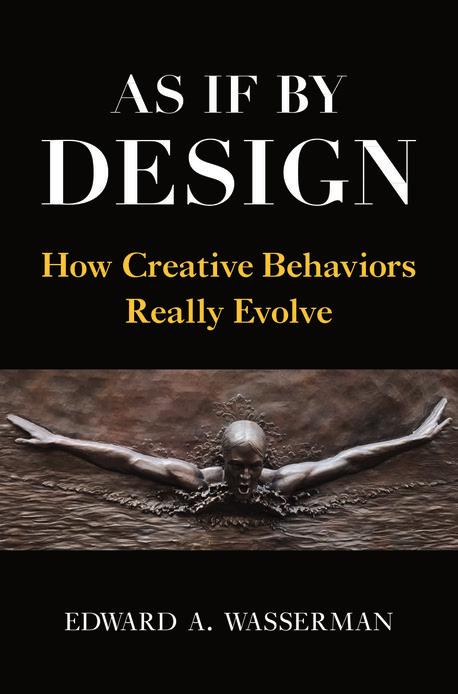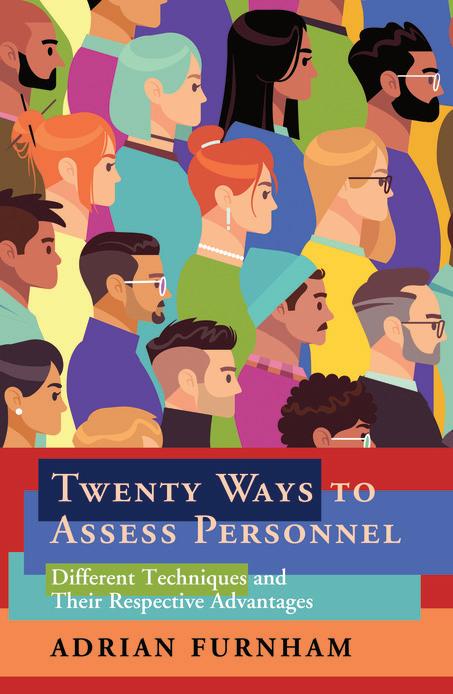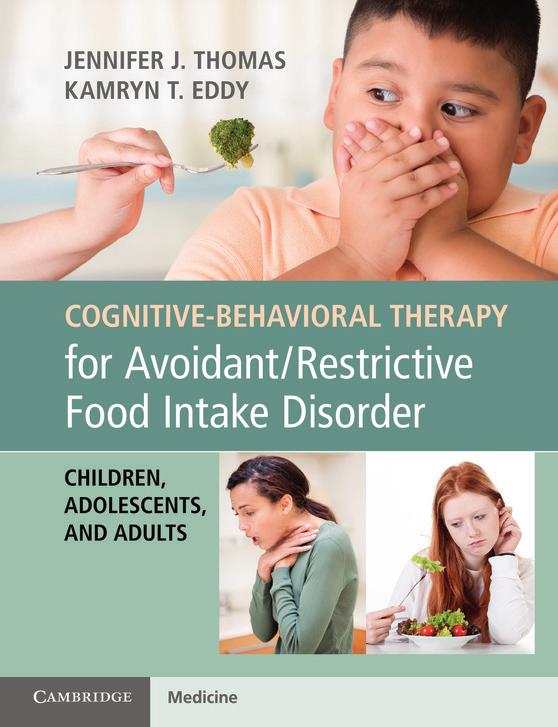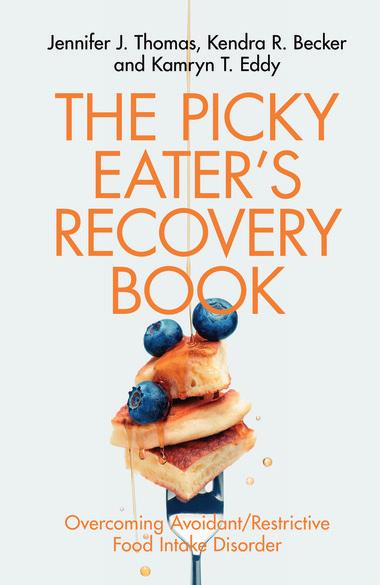
18 minute read
Psychology
As If By Design
How Creative Behaviors Really Evolve
Edward A. Wasserman
University of Iowa
Description
The eureka moment is a myth. It is an altogether naïve and fanciful account of human progress. Innovations emerge from a much less mysterious combination of historical, circumstantial, and accidental influences. This book explores the origin and evolution of several important behavioral innovations including the high five, the Heimlich maneuver, the butterfly stroke, the moonwalk, and the Iowa caucus. Such creations’ striking suitability to the situation and the moment appear ingeniously designed with foresight. However, more often than not, they actually arise ‘as if by design.’ Based on investigations into the histories of a wide range of innovations, Edward A. Wasserman reveals the nature of behavioral creativity. What surfaces is a fascinating web of causation involving three main factors: context, consequence, and coincidence. Focusing on the process rather than the product of innovation elevates behavior to the very center of the creative human endeavor.
Key Features
• Adopts an objective scientific approach to the study of creativity and innovation • Demonstrates the centrality of behavior in the creative process • Offers a framework for understanding creativity by stressing context, consequence, and coincidence in the evolution of innovative behaviors
• Deploys a narrative approach, using real life stories to explain creativity
Contents
Section I. Introduction; Section II. The Vignettes; Part I. Sports; 1. Dick Fosbury’s High Jump was No Flop!; 2. Shedding Fresh Light on the History of the Butterfly Stroke; 3. The Monkey Crouch: Jockeying for Position; 4. Riding Acey-Deucy; 5. The High Five: One Singular Sensation; Part II. Medicine; 6. The Apgar Score: ‘Millions Have Been Saved’; 7. The Ponseti Method: Effective Treatment for Clubfoot Only 2,400 Years in the Making; 8. The Heimlich Maneuver; 9. Eating to Live: The Lifesaving Contribution of Stanley Dudrick; 10. What’s in a (Drug) Name?; 11. Self-Medication by People and Animals; 12. Personalized Medicine: The End of Trial-and-Error Treatment?; Part III. Hygiene; 13. Florence Nightingale: Advancing Hygiene through Data Visualization; 14. Taking Mental Floss to Dental Floss; 15. A Very Close Shave; Part IV. Arts, Entertainment, and Culture; 16. Ansel Adams: Art for Art’s Sake?; 17. Basil Twist: ‘Genius’ Puppeteer; 18. Moonwalking: And More Mundane Modes of Moving; 19. Play on Words; 20. Cuatro Festivals Españoles; 21. Tchaikovsky: Puzzles of the Pathétique; 22. The Evolution of the Violin: Survival of the Fittest or the Fondest Fiddle?; Part V. Is This Heaven? No, It’s Iowa!; 23. The Rise and the Demise of the Iowa Caucus; 24. Iowa’s Blackout Plates: Artistic License Hits the Road; 25. If I Write It, They Will Build It; Section III. Putting It Together; 26. Context, Consequence, and Coincidence; 27. Are We Just Making It Up as We Go Along?
Additional Information
Level: General readers, undergraduate students
July 2021 229 x 152 mm 328pp 978-1-108-47776-5 Hardback £69.99 / US$89.99
Giving the Devil his Due
Reflections of a Scientific Humanist
Michael Shermer
Chapman University, California
Description
Who is the ‘Devil’? And what is he due? The Devil is anyone who disagrees with you. And what he is due is the right to speak his mind. He must have this for your own safety’s sake because his freedom is inextricably tied to your own. If he can be censored, why shouldn’t you be censored? If we put barriers up to silence ‘unpleasant’ ideas, what’s to stop the silencing of any discussion? This book is a full-throated defense of free speech and open inquiry in politics, science, and culture by the New York Times bestselling author and skeptic Michael Shermer. The new collection of essays and articles takes the Devil by the horns by tackling five key themes: free thought and free speech, politics and society, scientific humanism, religion, and the ideas of controversial intellectuals. For our own sake, we must give the Devil his due.
Key Features
• Outlines a ten-point defence of free speech and open inquiry in politics, science, and culture • Presents numerous real-world examples of how science and reason can be employed for solving moral dilemmas and determining human values
• Supplies many examples of heretics and heterodox thinkers, who challenged the orthodoxy and were punished for it, and how we should think about people whose claims challenge mainstream ideas today

Contents
Introduction. Who is the Devil and what is he due?; Part I. The Advocatus Diaboli: Reflections on Free Thought and Free Speech: 1. Giving the Devil his due: why freedom of inquiry and speech in science and politics is inviolable; 2. Banning evil: in the shadow of the Christchurch massacre, myths about evil and hate speech are misleading; 3. Free speech even if it hurts: defending Holocaust denier David Irving; 4. Free to inquire: the evolution-creationism controversy as a test case in equal time and free speech; 5. Ben Stein’s blunder: why intelligent design advocates are not free speech martyrs; 6. What went wrong? Campus unrest, viewpoint diversity, and freedom of speech; Part II. Homo Religiosus: Reflections on God and Religion: 7. E pluribus unum for all faiths and for none; 8. Atheism and liberty: raising consciousness for religious skepticism through political freedom; 9. The curious case of Scientology: is it a religion or a cult?; 10. Does the Universe have a purpose?; 11. Why is there something rather than nothing?; Part III. Deferred Dreams: Reflections on Politics and Society: 12. Another dream deferred: how identity politics, intersectionality theory, and tribal divisiveness are inverting Martin Luther King, Jr’s dream; 13. Healing the bonds of affection: the case for classical liberalism; 14. Governing mars: lessons for the red planet from experiments in governing the blue planet; 15. The Sandy Hook effect: what we can and cannot do about gun violence; 16. On guns and tyranny; 17. Debating guns: what conservatives and liberals really differ on about guns (and everything else); 18. Another fatal conceit: the lesson from evolutionary economics is bottom-up self-organization, not top-down government design; Part IV. Scientia Humanitatis: Reflections on Scientific Humanism: 19. Scientific naturalism: a manifesto for Enlightenment humanism; 20. Mr Hume: tear. Down. This. Wall.; 21. Kardashev’s types and Sparks’ law: how to build civilization 1.0; 22. How lives turn out: genes, environment, and luck –what we can and cannot control; Part V. Transcendent Thinkers: Reflections on Controversial Intellectuals: 23. Transcendent man: an elegaic essay to Paul Kurtz –a skeptic’s skeptic; 24. The real hitch: did Christopher Hitchens really keep two sets of books about his beliefs?; 25. The skeptic’s chaplain: Richard Dawkins as a fountainhead of skepticism; 26. Have archetype –will travel: the Jordan Peterson phenomenon; 27. Romancing the past: Graham Hancock and the quest for a lost civilization.
Additional Information
Level: General readers, academic researchers
August 2021 366pp 22 b/w illus. 978-1-108-74758-5 Paperback £12.99 / US$16.95
Measuring Behaviour
An Introductory Guide Fourth edition
Melissa Bateson
Newcastle University and Paul Martin
Description
Measuring Behaviour is the established go-to text for anyone interested in scientifi c methods for studying the behaviour of animals or humans. It is widely used by students, teachers and researchers in a variety of fi elds, including biology, psychology, the social sciences and medicine. This new fourth edition has been completely rewritten and reorganised to refl ect major developments in how behavioural studies are conducted. It includes new sections on the replication crisis, covering Open Science initiatives such as preregistration, as well as fully up-to-date information on the use of remote sensors, big data and artifi cial intelligence in capturing and analysing behaviour. The sections on the analysis and interpretation of data have been rewritten to align with current practices, with advice on avoiding common pitfalls. Although fully revised and revamped, this new edition retains the simplicity, clarity and conciseness that have made Measuring Behaviour a classic since the fi rst edition appeared more than 30 years ago.

Key Features
• Fourth edition of a classic text, completely rewritten to refl ect major advances in behavioural science but retaining the simplicity, clarity and conciseness for which it is known • Now includes completely new sections on the replication crisis and Open Science movement, as well as on the ethics of behavioural research, with boxes containing worked examples introduced throughout • Describes the range of technologies now available for capturing and processing behaviour in humans and animals, explaining the data pipeline, big data and the use of artifi cial intelligence for automated behavioural coding.
Contents
Acknowledgements; 1. Introduction; 2. Science and Truth; 3. Choosing a Research Question; 4. Designing a Behavioural Study; 5. Ethics and the Law; 6. Defi ning Behavioural Metrics; 7. Recording Methods; 8. Recording Technology; 9. Individuals and Groups; 10. Measurement Quality; 11. Data Analysis; 12. Interpreting and Communicating Findings; References; Index.
Additional Information
Level: Undergraduate students, graduate students
May 2021 229 x 152 mm 246pp 978-1-108-47831-1 Hardback £74.99 / US$99.99
Previous editions sold in Czech and Italian.

Revenge across Childhood and Adolescence
Holly Recchia
Concordia University, Montréal
Cecilia Wainryb
University of Utah
Description
This volume brings together research on revenge across childhood and adolescence to explore how revenge is a part of normative development, but also arises from maladaptive social environments. The chapters demonstrate the ways in which revenge is intertwined with social, emotional, cognitive, and moral development as well as being informed by interpersonal experiences within familial, educational, community, and cultural social settings. The book summarizes international scholarship on revenge across early childhood to late adolescence from a wide variety of interdisciplinary perspectives to provide a comprehensive overview of the field. The authors address how individual differences in revenge emerge as an adaptation to the challenges faced when growing up in adverse social and societal conditions. They then suggest a range of avenues for effective intervention that take account of the complexity of revenge as a psychological and social phenomenon.

Key Features
• Presents diverse theoretical and disciplinary perspectives on revenge in childhood and adolescence • Considers a variety of approaches aimed at addressing revenge in childhood and adolescence across various levels of youth social ecologies • Maps out the ways in which revenge is part of normative development, but also emerges from adverse social environments
Contents
1. And if you Wrong us, Shall we not Revenge? The Value of Grappling With the Experience of Revenge Among Youth; 2. A Framework for Understanding Variation in Youth Revenge Motivations and Retaliatory Behaviors; 3. Normative Changes and Individual Differences in Retaliation Judgments: A Constructivist Developmental Perspective; 4. Developing Revenge in Early Childhood: Current Evidence and Future Directions; 5. Understanding Youths’ Retaliatory Experiences Through the Lens of Moral Agency; 6. Cultural Systems and the Development of Norms Governing Revenge and Retribution; 7. Settling the Score in a Zero-Sum Game: Understanding Revenge Among Urban Male Youth Overexposed to Gun Violence; 8. Intergroup Processes: Revenge among Youth Living Amid Protracted Conflict; 9. Revenge, Justice Systems, and Institutional Trust in Schools: Narrative Considerations; 10. The Importance of a Positive School Climate in Addressing Youth Retaliation; 11. Socioemotional Competencies and Positive Classroom Climate as Alternatives to Prevent Revenge in Colombian Schools; 12. Looking Back and Charting a Course: Considering Individual, Interpersonal and Institutional Contributions to the Development of Revenge in Childhood and Adolescence.
Additional Information
Level: Academic researchers, graduate students
July 2021 229 x 152 mm c.350pp 978-1-108-48936-2 Hardback £85.00 / US$110.00
Shakespeare and the Experimental Psychologist
Fathali M. Moghaddam
Georgetown University, Washington DC
Description
Gain a better understanding of human behavior by exploring thought experiments in Shakespearean plays and the historical roots of experimental psychology within early modern literature. This book combines scientific psychology with English literature to discuss thought experiments in selected Shakespeare plays and examine the central role of thought experiments in the natural sciences. Thought experiments are essential for progress in scientific research. Indeed, Albert Einstein and a number of other leading scientists relied almost exclusively on thought experiments. Thought experiments also play a pivotal role in English literature, particularly in Shakespeare plays. By focussing on thought experiments and experimental psychology’s place within early modern English literature, the volume establishes a more wholistic approach to understanding human behavior.

Key Features
• Shows how the roots of experimental psychology can be found in early modern English literature • Gives a wider, more accurate perspective on relations between English literature, psychology, and other social sciences • Demonstrates the power of thought experiments in Shakespeare plays, as well as in both the humanities and social sciences in general
Contents
Preface; Acknowledgements; 1. Introducing Shakespeare’s psychological thought experiments; 2. Experimental research; Part I. Thought Experiments Involving Plays within Plays: 3. Hamlet; 4. Henry IV-Part- I;Part II. Thought Experiments and the Power of Context: 5. The Tempest; 6. As You Like It; 7. King Lear; 8. Othello; 9. Richard III; 10. Macbeth; 11. Julius Caesar.
Additional Information
Level: Undergraduate students, graduate students
June 2021 229 x 152 mm c.200pp 978-1-108-49150-1 Hardback £74.99 / US$99.99
The Enablers
How Team Trump Flunked the Pandemic and Failed America
Barbara Kellerman
Harvard University, Massachusetts
Description
The COVID-19 pandemic will forever be remembered as a pivotal event in American history. Written by one of the world’s foremost experts on leadership and followership, this book centers on the first six months of the pandemic and the crises that ran rampant. The chapters focus less on the former president, Donald Trump, than on his followers: on people complicit in his miserable mismanagement of the crisis in public health. Barbara Kellerman provides clear and compelling evidence that Trump was not entirely to blame for everything that went wrong. Many others were responsible including his base, party, administration, inner circle, Republican elites, members of the media, and even medical experts. Far too many surrendered to the president’s demands, despite it being obvious his leadership was fatally flawed. The book testifies to the importance of speaking truth to power, and a willingness to take risks properly to serve the public interest.

Key Features
• Provides an alternative view of the leadership of the pandemic as it unfolded in the USA • Explains how supporters and subordinates of Trump were complicit in the chaos • Shows how fixation on bad leaders protects bad followers from sharing responsibility and shouldering blame
Contents
Part I. Trump’s Tribe: 1. Base; 2. Party; 3. Administration; 4. Inner Circle; Part II. Virus Crisis: 5. Prequel to the Pandemic; 6. Sequence of the Pandemic; 7. Science of the Pandemic; 8. Politics of the Pandemic; Part III. Trump’s Team: 9. Vice President, Cabinet; 10. Senior Advisors; 11. Senators, Governors, Media; 12. Medical Experts; Epilogue: Enabler Effect.
Additional Information
Level: General readers, graduate students, professionals
August 2021 229 x 152 mm 330pp 978-1-108-83832-0 Hardback £20.00 / US$24.95
Twenty Ways to Assess Personnel
Different Techniques and their Respective Advantages
Adrian Furnham
University of London
Description
Over the years, there has been more and more research to test the validity of personnel assessment methods, an area which is far from easy. This book compares traditional practices against new techniques, including social media analytics, wearables, mobile phone logs, and gamification. Researchers and businesses alike know the importance of making good, and avoiding bad, selection decisions, but are unsure of how to proceed effectively. This book maps out the viable options and advises on best practice. The author combines both practical applications and academic, psychological research to explain how each method works, the theory behind it, and the extent of the evidence that supports it.

Key Features
• Explains personnel assessment from a psychologist’s perspective • Combines practical applications and academic research • Shows how each method works, the theory behind it, and the evidence that supports it
Contents
1. Introduction; 2. Important issues in selection and assessment; 3. Traditional and discredited methods; 4. Self report tests; 5. Observer reports; 6. Behavioural tests; 7. Physiology; 8. Biography; 9. Big data; 10. The future of assessment.
Additional Information
Level: Professionals, graduate students, undergraduate students
July 2021 229 x 152 mm c.300pp 978-1-108-84468-0 Hardback £99.99 / US$130.00
Children, Adolescents, and Adults
Jennifer J. Thomas
Harvard Medical School
and Kamryn T. Eddy
Harvard Medical School
Description
Avoidant/restrictive food intake disorder (ARFID) is a common eating disorder diagnosis that describes children and adults who cannot meet their nutritional needs, typically because of sensory sensitivity, fear of adverse consequences and/or apparent lack of interest in eating or food. This book is the fi rst of its kind to offer a specialist treatment, specifi cally for ARFID. Developed, refi ned and studied in response to this urgent clinical need, this book outlines a specialiZed cognitive-behavioral treatment: Cognitive-Behavioral Therapy for Avoidant/Restrictive Food Intake Disorder (CBT-AR). This treatment is designed for patients across all age groups, supported by real-life case examples and tools to allow clinicians to apply this new treatment in their own clinical settings.

Key Features
• Fills a desperate gap in the market for a specialist treatment for avoidant/restrictive food intake disorder (ARFID), providing mental health professionals with information and guidance in how to treat patients • This treatment can be offered to all age groups and therefore there is no need to learn multiple therapies • A comprehensive therapy that addresses diagnostic heterogeneity within ARFID; clinicians can select specifi c modules that are relevant to the patient’s primary ARFID maintaining mechanisms
Contents
Dedication; List of fi gures; List of tables; Foreword; Preface; Acknowledgements; 1. What is ARFID?; 2. Overview of existing treatments for feeding, eating, and anxiety disorders; 3. Assessment of ARFID; 4. Cognitive-behavioral model of ARFID; 5. Overview of CBT-AR; 6. Stage 1: Psychoeducation and early change; 7. Stage 2: treatment planning; 8. Stage 3: maintaining mechanisms in order of priority; 9. Stage 4: relapse prevention; 10. CBT-AR case examples; 11. Conclusion and future directions; Appendix 1: CBT-AR competence ratings; Appendix 2: CBT-AR adherence: session-by-session ratings; References; Index.
Additional Information
Level: Medical specialists/consultants
November 2018 246 x 189 mm 190pp 19 b/w illus. 16 tables 978-1-108-40115-9 Paperback £28.99 / US$39.99
Russian and Spanish rights sold.

The Picky Eater’s Recovery Book
Overcoming Avoidant/Restrictive Food Intake Disorder
Jennifer J. Thomas
Harvard Medical School Kendra R. Becker
Harvard Medical School
and Kamryn T. Eddy
Harvard Medical School
Description
Are you a picky eater? Do you worry that food will make you vomit or choke? Do you find eating to be a chore? If yes, this book is for you! Your struggles could be caused by Avoidant Restrictive Food Intake Disorder (ARFID); a disorder characterized by eating a limited variety or volume of food. You may have been told that you eat like a child, but ARFID affects people right across the lifespan, and this book is the first specifically written to support adults. Join Drs. Jennifer Thomas, Kendra Becker, and Kamryn Eddy – three ARFID experts at Harvard Medical School – to learn how to beat your ARFID at home and unlock a healthier relationship with food. Real-life examples show that you are not alone, while practical tips, quizzes, worksheets, and structured activities, take you step-by-step through the latest evidence-based treatment techniques to support your recovery.

Key Features
• The first book supporting adults with recovery from picky eating, fear of vomiting/choking or lack of interest in eating (the key characteristics of ARFID) • Includes real-life examples of people struggling with ARFID, to help you understand the disorder and realize that you are not alone • Provides evidence-based techniques to support recovery, with practical tips, quizzes, worksheets, and structured activities you can work through independently at home
Contents
Dedication; Foreword; Preface; Acknowledgements; Part I. All About ARFID: 1. What is ARFID?; 2. Do you have ARFID?; Part II. Getting Started (Stages 1 and 2): 3. How does ARFID work?; 4. Regular eating and early change; 5. Identifying what else needs to change; Part III. Tackling What Keeps Your ARFID Going (Stage 3): 6. Sensory sensitivity; 7. Fear of aversive consequences; 8. Lack of interest in eating or food; 9. Shape and weight concerns in the context of ARFID symptoms; Part IV. Moving Forward (Stage 4): 10. Continuing to make progress and preventing relapse; 11. Conclusion; References.
Additional Information
Level: General readers, professionals
August 2021 198 x 129 mm 280pp 978-1-108-79617-0 Paperback £12.99 / US$16.95
Suicide Prevention
Stahl’s Handbooks
Christine Yu Moutier
The American Foundation for Suicide Prevention
Anthony R. Pisani
University of Rochester Medical Center, New York
and Stephen M. Stahl
University of California, San Diego
Description
The current suicide public health crisis and advances in clinical practice have increased the need for clear, evidence-informed guidance on suicide prevention in healthcare. This clinical suicide prevention handbook is an essential resource for mental health and primary care professionals, and any practitioner aiming to ensure their practice is up-to-date, patient-centred and consistent with the most current standards of care. Starting with a summary of the science and public health model of suicide, the book offers quick tips for suicide screening, risk assessment, interventions, and follow-up communication. It discusses medicolegal risk management, how health systems can prevent suicide and provides highly specialized guidance for clinicians following the loss of a patient to suicide. Focused sections include incorporating social media into care plans, telemedicine, issues related to culture and race/ethnicity, and working with specific populations. It introduces an integrated, prevention-oriented approach to suicide prevention, incorporating realistic supports, foreseeable changes, and strategies.

Key Features
• Provides clear and useful steps, with essential background information, that emphasise actionable steps and clear take-away points, allowing readers to find practical guidance quickly during the clinical care of patients • Tackles a very timely subject matter, with the topic of suicide prevention gaining momentum in both mainstream culture and the clinical world, and includes personal accounts voiced by people with Lived Experience of Suicide (suicide loss and attempt survivors) • Covers the most recent accreditation requirements regarding new standards, supporting training efforts in health systems and providing a framework for other current changes such as the Zero Suicide movement in healthcare
Contents
Part I. Suicide Prevention Overview: 1. Translating Science into Action; 2. Dispelling Myths; 3. Public Health Model of Suicide; 4. Understanding Why: Drivers of Suicide Risk; Part II. Clinical Risk Assessment and Care: 5. Collaborative Connections; 6. Prevention Oriented Suicide Risk Assessment; 7. Responding to Suicide Risk; 8. Extending Care Beyond the Individual; 9 .Use of Medications in Suicide Prevention; 10. Suicide Prevention in Healthcare Systems; Part III. Special Topics: Medicolegal Considerations and Specific Populations: 11. Medicolegal Risk Management; 12.The Role of Culture and Societal Factors; 13. Youth and Adolescents; 14. Military and Veterans; 15. Older Adults; 16. LGBT Populations; 17. Suicide Loss Survivors.
Additional Information
Level: Primary Care Physicians/GPs, medical specialists/consultants, professionals Series: Stahl’s Essential Psychopharmacology Handbooks
May 2021 186 x 123 mm c.192pp 978-1-108-46362-1 Paperback £26.99 / US$34.99










